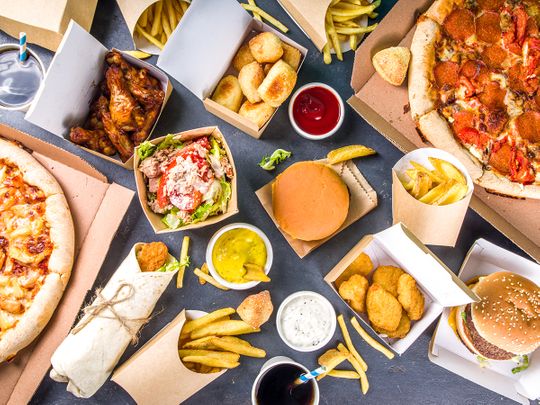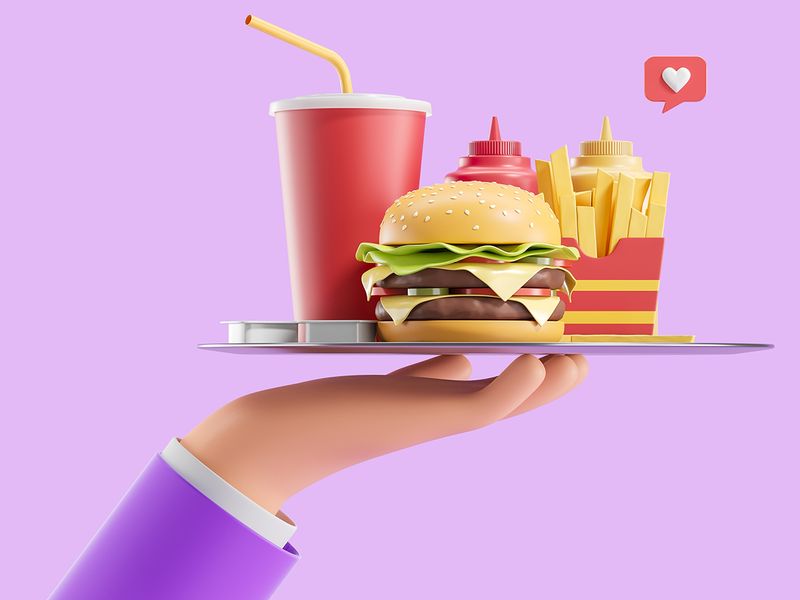
The restaurant industry was among the hardest hit during the pandemic. But the restaurant scene is bouncing back - especially fast-food chains.
In the second quarter of 2023, sales at fast-food and quick-serve restaurants like McDonald's and Starbucks increased by an average of 5.75 per cent over the same quarter last year, according to company earnings reports for 43 major restaurant chains. Sit-down casual and fine-dining chains, meanwhile, saw an average increase in sales of 2.38 per cent.
Here are the main reasons consumers have doubled down on their affection for fast food:
1. Groceries are still expensive
Though inflation is receding, groceries remain pricey, with the cost of basic building blocks of meals at home still elevated. Cereal and baked good prices are up 29 per cent from the beginning of 2020. Eggs are up 52 per cent. Food prices continue to be high globally, partly due to residual supply-chain disruptions and partly because of the war in Ukraine. And in the United States, some grocery prices remain high because low-wage workers, from farmworkers to grocery clerks, have seen big pay increases.
US census data shows that since the start of the pandemic, inflation overall has risen fairly steadily, peaking at an annual rate of 9.1 per cent in June 2022. But inflation of food eaten at home - that's groceries - has risen much more steeply, reaching its peak of 13.5 per cent in August 2022. Price increases for food away from home (fast-food, quick-serve and other restaurants) increased much more slowly, rising to a peak of 8.8 per cent in March this year.

For restaurant-goers, convenience and price are critical, especially when they are feeling financially squeezed. So if the average eater's check is $8 at a quick-serve pizza chain and $6.56 at a hamburger chain, according to market research firm Circana, these restaurants are an affordable option often competitive with making a meal at home.
Fast-food restaurants don't require tipping and often have loyalty rewards programs that amplify their affordability (McDonald's mobile app was downloaded 127 million times globally last year). In short, a large pizza from a national chain may feed a family more affordably than a homemade chicken-rice-broccoli meal (and often the kids are more enthusiastic).
2. Covid-era enhanced food stamps benefits ended
During the pandemic, people increased their consumption of homemade food. For low-income Americans, this trend was supercharged by a significant spike in food stamp benefits for groceries. But that enhanced benefit ended in March, leading to a rise in food insecurity and giving low-income families less grocery-buying power.
As a result, in the initial months after the benefit cutbacks, households that use the program reduced their monthly food and beverage grocery purchasing on average by about 35 percent of cut benefits, according to Circana. For example, if food stamps (now called SNAP) benefits were cut by $200, food and beverage spending at the grocery store would be about $70 less per month.
SNAP households decreased their spending on nonfood items at over three times the rate of their spending on food and beverages, in part because benefits can only be used for food and beverage purchases at grocery stores and other retail outlets.
With the money saved from reducing nonfood purchases, SNAP households increased their use of fast-food and quick-service restaurants, according to Circana data. Pizza chains represented the largest share of their visits, and hamburger fast-food restaurants represented 18 percent of SNAP recipients' spending and visits.
read more
- Food prices pick up as trade tensions and extreme weather flare
- World needs to find immediate solution to looming food supply crisis
- UAE food importers move quickly to limit impact due to India's non-basmati rice export ban
- India inflation at 15-month high as food costs rise
- Wheat rises more than 10% this week in food inflation threat
3. Drive-through is king
From February 2020 to April 2023, on-premises dining went down 14 percent, according to the National Restaurant Association. In that same time, off-premises dining increased 14 percent, with drive-through up 12 percent and delivery up 5 percent (carryout is down 3 percent).
Quick-serve restaurants with drive-throughs are stomping restaurants that are largely sit-down. Sales at existing Applebee's restaurants (although testing drive-through, it's mostly sit-down) was down 1 percent in the second quarter this year relative to the same time last year, and sales at Darden's fine-dining restaurants Capital Grille and Eddie V's were down 1.9 percent in that same time period. But now for the drive-through giants: McDonald's was up 10.3 percent in the second quarter compared with the same quarter last year; Burger King was up 8.3 percent.
Of all orders placed at American fast-food restaurants last year, 85 percent were taken to go, according to Circana data. Many chains, from Taco Bell to McDonald's, have ramped up drive-through lanes, some devoted solely to delivery drivers or orders placed via mobile apps. These are gleaming high-tech spaces missing only one thing: They have no dining rooms at all.
Part of the explanation is changing consumer tastes. Diners are less enthusiastic about eating in casual restaurant dining rooms, they are fatigued of "tip creep" (really, we're supposed to tip at a grocery store or the self-serve fro-yo shop now?), and they'd frankly like to minimize human interaction.
4. There are healthier fast-food options now
The second quickest-growing fast-food chain in the United States right now sells salads. Salad and Go, a tech-forward chain with locations concentrated in the Southwest, saw its units expand by 115.8 percent last year, while sales rose 166.3 percent, according to market research firm Datassential.
In the early 2000s, consumers called for more healthy options on fast-food menus. The big chains delivered, but during the pandemic, as menus shrank to accommodate a tight labor market, frequently those healthier options disappeared. Still, "better for you" fast-food options have proliferated, often drawing a younger clientele (according to a new report by NPD Gathering, 19 percent of Gen Z shoppers identify as "veggie lovers" or vegetarian).
Subway still has the most units sold and McDonald's is No. 1 in terms of sales, but plenty of salad-forward chains are crowding the landscape. Fresh & Co, Crisp & Green and others have joined the original fast-casual salad places, Chop't and Sweetgreen (the latter, founded in 2006, is still not profitable, but leadership says its loyalty program and new fully automated kitchens are getting it closer to being in the black). And a host of vegan quick-serve spots have gained traction, from D.C.-based Hip City Veg and Plnt Burger to Atlanta's Slutty Vegan and the national Veggie Grill.
5. Return-to-work orders are fueling food on the go
For several years, millions of American workers padded into their home kitchens every couple of hours for a snack or to slap together a quick sandwich. But recently, President Biden has urged officials to have more of their workers return to the office and even Zoom, the company that enabled remote work, has joined the growing return-to-office trend.
Many downtowns saw significant closures of independent mom-and-pop sit-down restaurants that depended upon office worker lunch business, even as fast-food drive-throughs have flourished. More back-to-office mandates may be spurring further growth. According to Yelp data, business openings for fast-food restaurants are up 10 percent in the past three months (May to July) compared with the same period last year. As a comparison, grocery store openings have increased by half that.
6. Fast-food and quick-serve restaurants are embracing automation and AI
Fast food's growth has been fueled in large part by advances in what McDonald's calls the three D's: digital, delivery and drive-through. In a period when hiring has been difficult, the fast-food industry has adopted automation, both robotics and artificial intelligence, in an aim to streamline service and improve staff recruiting and retention.
Chipotle has robots making chips, Jack in the Box and White Castle robots are manning the deep fryers, and at Panera robots are overseeing the coffee preparation. But digitally streamlining delivery and takeout is nearly ubiquitous in quick-serve restaurants.
For Wingstop, which saw a staggering 16.8 percent growth in the second quarter compared with the same time last year, nearly all of their business is takeout (70 percent) or delivery (30 percent), but the company sees the potential to nearly double that delivery piece, according to spokeswoman Maddie Lupori. In the second quarter of this year, 65.2 percent of Wingstop transactions were ordered digitally, either via their website, their app or AI-assisted phone orders. They aim to have 100 percent of orders digital, which means a lot fewer employees on the phone or at the counter.



